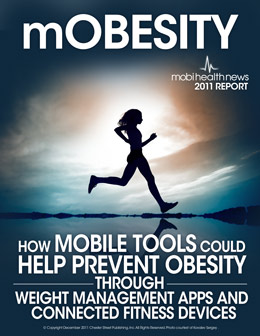|
Mobile-enabled fitness devices and dieting smartphone apps have dominated headlines in the past year. The rise of Silicon Valley-based health startups, which overwhelmingly focus on wellness rather than clinical offerings, has inspired a flurry of investment activity. While many of these new ventures aim to make it easier, more fun, and more engaging for people to diet and exercise, some of them also aim to put a dent in the country's biggest health issue: obesity.
This report, MobiHealthNews' mObesity, is a comprehensive report focused on the news, challenges, and missteps made by some of the highest profile companies offering connected fitness services today. In its 65 pages, mObesity includes a roundup of a couple dozen of the startups working in the sector; the announced investment activity surrounding connected fitness startups in the past three years; a discussion of mistakes made (and still being made) by the current crop of wellness startups; a review of some of the efficacy and effectiveness studies about connected fitness devices; and much more.
What's clear now is that contrary to the commonly held belief, many of the developers of these fitness and dieting-related devices and apps are working to create services for those who need to lose weight. These aren't just for super athletes and the food conscious.CLICK HERE TO PURCHASE!
Publish date: December 26, 2011
Page count: 64
Table of Contents:
Introduction
The problem
Does the technology help address the problem?
Who uses these tools?
Proliferation of connected fitness devices
Missteps
Looking ahead
Who has invested?
Regulation
Conclusion
Appendix I. Calories Out: App and Device Profiles.
Appendix II. Calories In: App and Device Profiles.

















